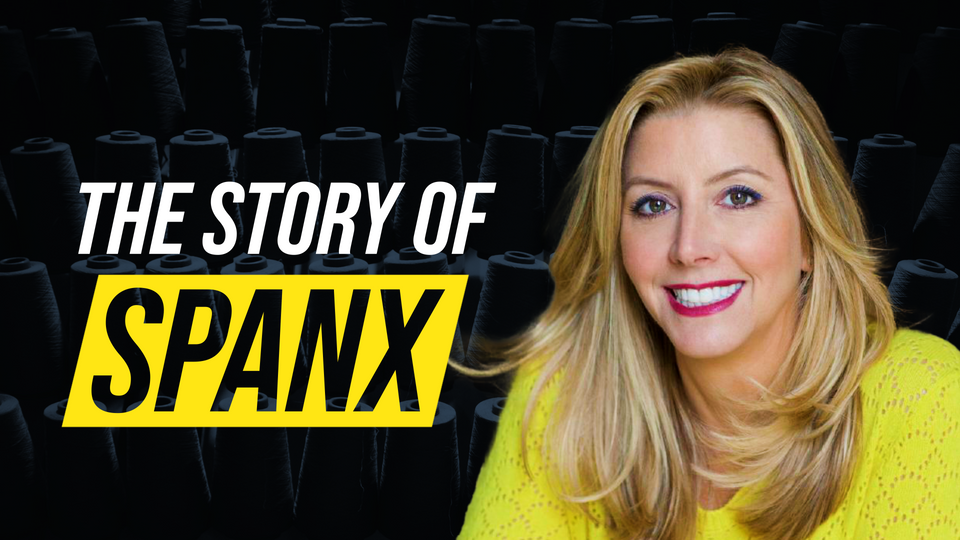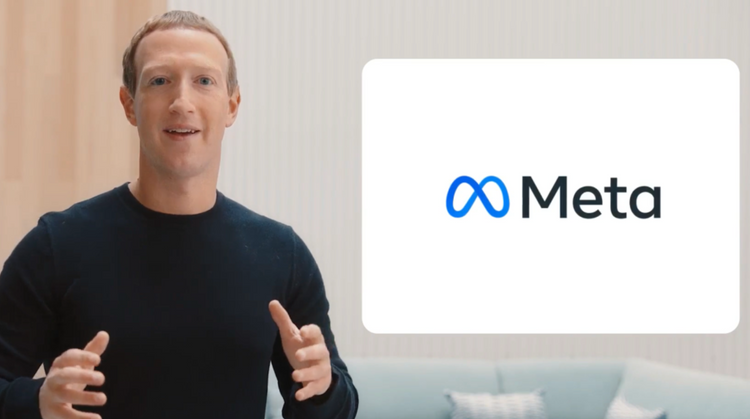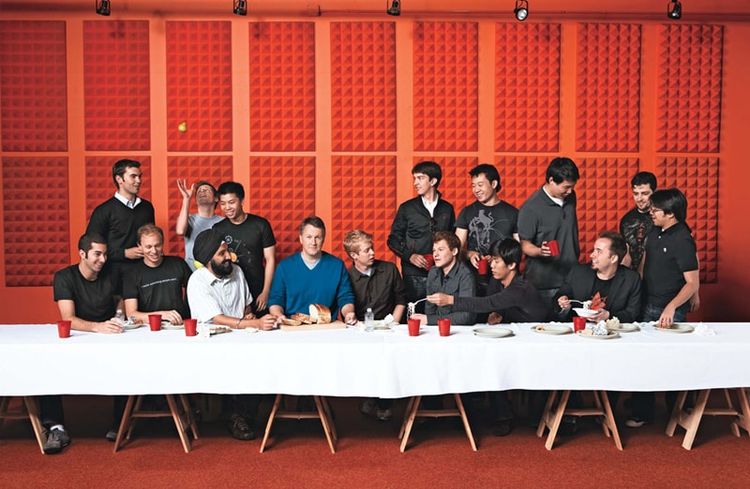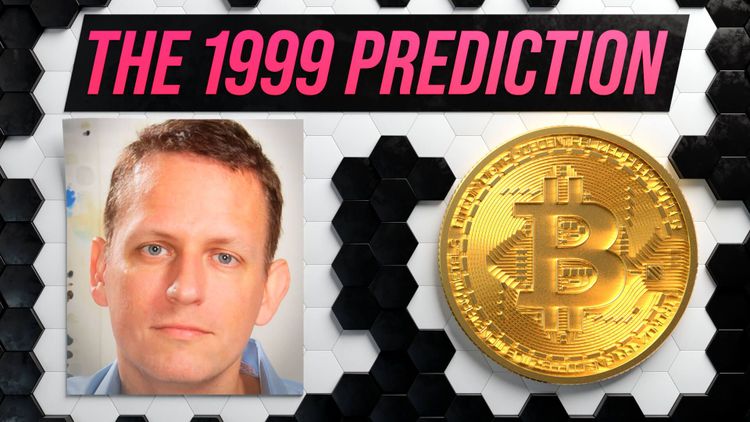How Sara Blakely Built Spanx

This… is Sara Blakely… and at age 27, she took $5,000 dollars and turned it into more than a billion. She did this by selling a new type of underwear called Spanx, but her strategy was unlike any other entrepreneur.
Mark Zuckerberg owns 30% of Facebook. Elon Musk owns just 20% of Tesla, but Sara Blakely… she owns 100% of Spanx… So what does Sara know that Elon and Zuck don’t?
Most entrepreneurs in Silicon Valley raise money at some point, and once they start raising money, it becomes a self-perpetuating cycle. One round leads to the next, and pretty soon even the best founders only own a fraction of their business. But Sara discovered an alternative strategy that every entrepreneur should pay attention to, whether or not you plan on raising money for your business.
If you were to ask Sara how she became a billionaire without ever selling a single share of her company’s stock, she would probably give you a simple answer like this:
“I don’t know if it was a super conscious decision along the way, more than I just didn’t really have the need to. Spanx was profitable from the first month I was in business, I’m of the belief system, for me to start small, think big, and scale fast...” - Sara Blakely
But clearly if it were that easy, everyone would do it, so there has to be more going on here.
Sara often gets ignored by mainstream business news precisely because she never raised venture funding. Most reporters only write stories about companies when they announce a big funding round or go public, but Spanx has just been growing quietly for two decades now. And it’s too bad more people don’t focus on Sara’s story because her initial idea for Spanx follows the exact same pattern that so many Silicon Valley investors preach: “Solve a problem you yourself have.”
“I started Spanx as a frustrated consumer, I simply wanted to wear white pants to a party and have nothing show underneath it. My first product was footless pantyhose. I took a product that already existed and made a modification, I cut the feet out of pantyhose.” - Sara Blakely
Solving a problem for yourself is core to so many great startup ideas. In fact, “Make something people want” is the motto of Y Combinator. But lots of entrepreneurs follow this advice and don’t become billionaires. Sara clearly has a secret formula for success, so I listened to everything she’s ever said publicly and boiled down her growth strategy to 3 key factors. Let’s go through them one at a time.
When most people first come up with a startup idea, they think they’ve struck gold. It’s common to think that the idea is the hardest part, and once you have a good idea, you need to protect it at all costs, but this is actually a complete misconception. Execution is everything in entrepreneurship and great ideas don’t matter at all if you can’t make the idea a reality and then distribute it effectively. When Sara first came up with the idea for Spanx, she kept the idea a secret for a year and even patented the design before launching the company.
This flies in the face of most traditional thinking in Silicon Valley. Any investor will tell you to go out and build something to make sure there is a market before working on time consuming things like patents, but Sara saw things very differently, and this is factor number one: Sara sees patents as marketing.
Legally speaking, a patent is a government license that gives the inventor exclusive rights to a design for 20 years. It’s generally a way to stop people from copying you, but Sara has never sued anyone for copying Spanx design, instead, she focused on using the patent as a way to build trust in her consumers mind.
“I knew that I was patenting this to mostly to be able to show the value and use it as a marketing tool. I was mostly trying to convey, this is new, this is different” - Sara Blakely
The U.S. Patent system has become massively bloated with dozens of patents for slight variations on the same idea. And there is now a huge industry of patent trolls who’s only business is buying patents and then suing companies who might be infringing even slightly. Sara recognized that, even though the patent system wasn’t working as intended anymore, it could still be used to her advantage. Spanx customers would be drawn in by the “patent-pending” label and investigate the product more thoroughly, which would lead to purchases.
At my last company, Soylent, we took the opposite approach, sharing our formulas publicly and “open-sourcing” our ingredients. But the overarching goal was actually the same. We were doing this for marketing reasons. By branding ourselves as the one health food company that was completely open about how we made our products, we won over consumers who were hesitant to try Soylent themselves. The big takeaway here is that, as an entrepreneur, you need to be flexible while assessing opportunities. Even though patents may not protect you fully, the decision to patent could still have an impact on your business.
The key is to understand that getting a patent is not a significant milestone in building your business, only making a great product and growing your customer base is significant. I can’t tell you how many venture capitalists have told me funny stories about crazy inventors walking into their offices thinking that they had a great business just because they got a patent. There is so much more to growing a business than thinking of an idea and filing some paperwork to the US patent office, but Sara understands that completely, and that leads to her second key success factor.
Once you’ve actually developed a product, you need to be able to sell it, and Sara is a master of selling products. This makes sense, because she has a background in sales. Before she started Spanx, she went door to door selling fax machines and she learned a ton of valuable skills during that time.
It’s really common for entrepreneurs to forget about the importance of sales and marketing when they come from technology backgrounds. This was certainly the case for me when I first moved to Silicon Valley. I thought that marketing was unnecessary if you had a good product and generally thought salespeople were just paid to socialize. But the best salespeople are actually masters of human psychology.
The thing about psychology is that it can be very counterintuitive at times. For example, most entrepreneurs think that the best strategy is always to make a better product and sell it at a lower price, but that’s not always the case. See, back when Sara was selling fax machines door to door, she wasn’t working for Canon, which was the most popular brand at the time. She was selling a cheaper machine called a Dex, and customers weren’t really giving her the time of day. But then she discovered something incredible about the way people think about price and quality:
“So then I made the price of my Dex slightly higher than the canon and everybody stopped in my meetings and started asking more questions and saying “Why is this Dex more money than the canon what am I missing” and it gave me the opportunity to really sell the features and what was so special about the Dex fax machine. And people started buying” - Sara Blakely
This is the type of thing you would never learn if you were entirely focused on your product. At a certain point, you have to go and interact with customers in order to see how they actually behave. It might surprise you! Sara used everything she learned selling door to door to grow Spanx at the early stage. And it worked!
Lots of entrepreneurs confuse sales with advertising, but they are actually two completely different things. Spanx didn’t advertise, at all, for years, but that doesn’t mean Sara wasn’t laser focused on sales. She called department stores and pitched directly to buyers, never taking no for an answer. Her product was solid, but it was really her ability to convince retailers to take a chance on Spanx that set her apart from the competition.
Today, it’s common for startups to raise money and instantly start spending that cash on Facebook ads, but that can be a big mistake. Instead of seeing paid advertising as the only route to growth, try and broaden your horizons and think of all the ways you could reach your potential customer. The more you do as an individual entrepreneur, the more you’ll learn about your customer and be able to tailor your sales pitch to fit your specific market.
Sara’s determination didn’t stop once she got a yes from a retailer though. She would personally visit every store that carried Spanx to make sure that her product was in the optimal part of the store. No one is going to buy your product if it’s sitting on the bottom of the shelf at the back of the store. You want to be near the entrance or the cash register so everyone sees it! Sara knew this and she wouldn’t accept anything less than best possible placement for Spanx. She was so bold in fact, that she once got caught on security cameras personally moving her product to a better section of the store without telling management. But sometimes that’s what it takes to get ahead of the competition.
This is a big part of sales that often gets overlooked, and it comes back to human psychology again. Convincing someone to buy your product for their store is just the first step in actually growing your business. Plenty of people can be persuaded in a one-on-one conversation, only to lose interest the next day. Great entrepreneurs know that, even after they win a customer, they have to work extra hard to keep that customer happy and make sure the relationship doesn’t fizzle out.
Sara’s hard work paid off and Spanx started flying off shelves and then she got a huge break. She was invited on Oprah and got to pitch Spanx to millions of viewers. She told the perfect story around her product and it resonated with millions of consumers. Major celebrities started using Spanx and endorsing it publicly.
With so much buzz, Sara clearly could have raised boatloads of cash from top tier investors with ease, but she didn’t, and that brings me to Sara’s third key success factor: Sara puts profitability first.
At every stage of Spanx growth, Sara has been willing to get out of her comfort zone and do things herself instead of paying others and sacrificing profitability. Instead of hiring a fashion design firm, she designed the first version of Spanx herself. Instead of paying a law firm to file her patent, she went to the library and wrote it herself. Instead of hiring sales people, she called department stores herself. Only when Spanx was making plenty of money and could afford to hire people did she actually expand her team.
But ultimately, it doesn’t matter how much you’re willing to do yourself if your product isn’t making enough money. You need to make sure that the price your customers pay for your product is significantly higher than what it costs you to make it. Many startup founders try not to think about profitability early on, but Sara made sure that each pair of Spanx made plenty of profit for the business.
“A really good rule of thumb is five times manufacturing cost, with packaging included.” - Sara Blakely
Good margins like that will give you the opportunity to grow profitably without raising money, and that’s exactly what Sara did. She still owns 100% of Spanx and even though the company hasn’t gone public, she’s a billionaire.
But there’s one more important thing to note about her model of profitable growth. It’s really only an option if you commit to it fully. Once you raise money for your startup, your investors are going to expect you to pursue hypergrowth at all costs, and that often means raising more money and eventually going public. Some businesses are better suited for venture capital funding than profitable growth from day one, so really think about which model makes sense for your business. It can be hard to change horses midstream.
If you want to chat about startups, you can always DM me on Twitter.
This post is available as a YouTube video here:




